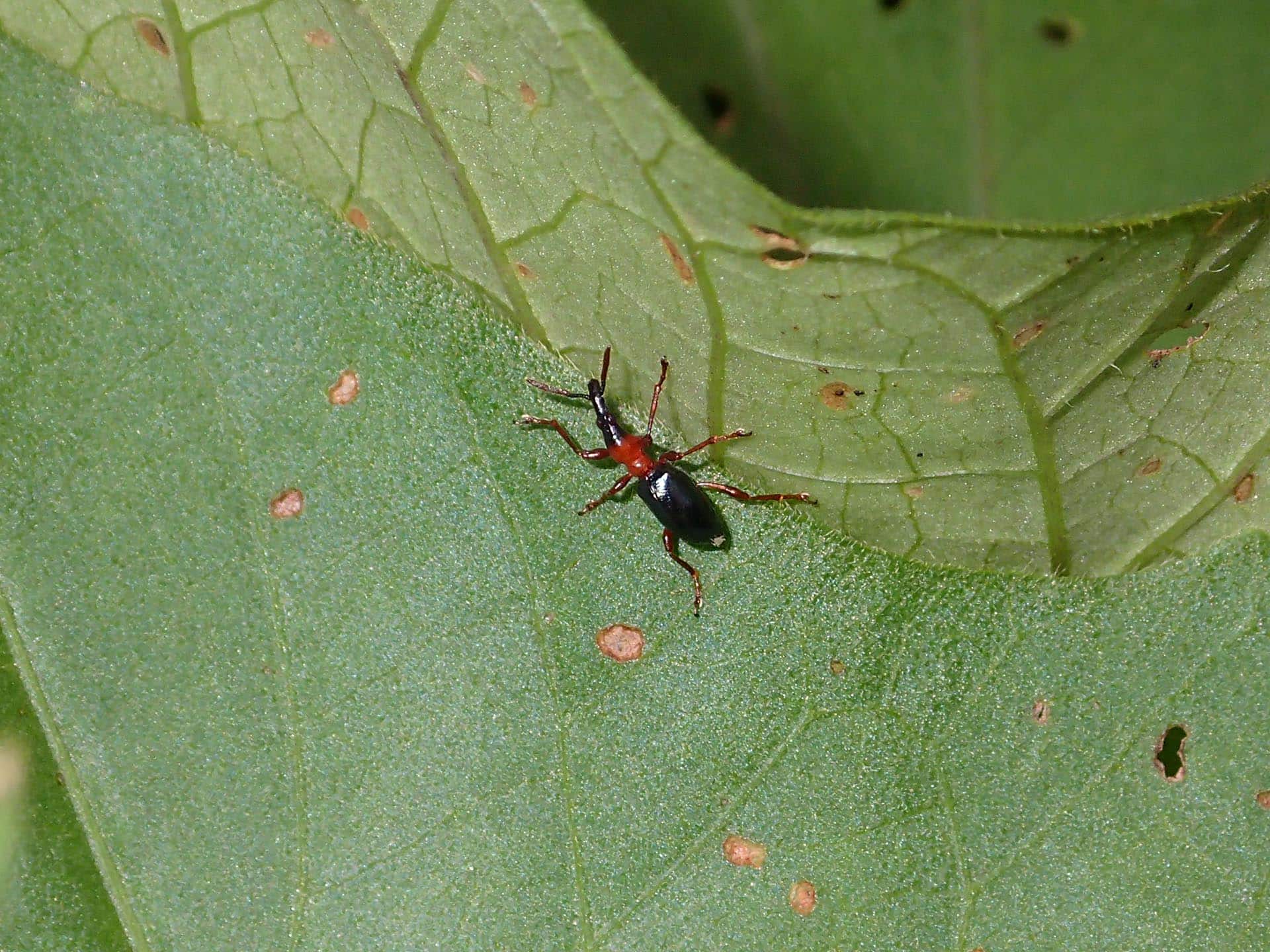The adults are ant-like beetles with bright orange/red thorax, antennae and legs. They have the typical long rostrum (snout) of weevils which is very slightly curved.
Their body, legs and head are long and thin. The elytra (wing covers) are dark metallic blue/black. They are able to fly, but don’t seem to travel far during the day, being more active at night. The females are larger than the males.
The larvae look like typical beetle grubs.
Adult size: 5-7 mm

